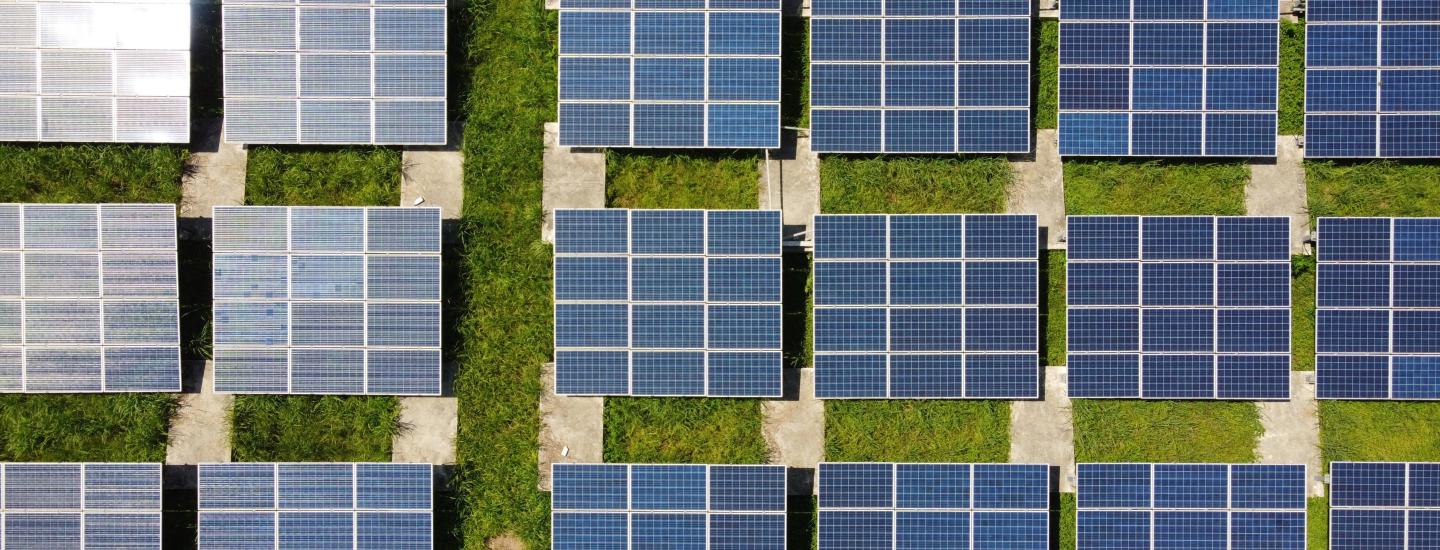
Environmental expert, and SCS instructor, Dr. Lucy Sportza shares some unexpected facts about renewable energy.
One of the main reasons there is so much global interest in adopting renewable energy is because it helps us reduce greenhouse gas emissions. But renewable energy is about more than climate change. Here are six facts you may not know about this critical technology.
1. Renewable energy can help address energy poverty
Around the world, hundreds of millions of people lack access to electricity, representing about 13% of the global population. The number of people lacking access to clean cooking fuels is much higher. Renewable energy technologies offer us the opportunity to alleviate energy poverty in an environmentally sustainable and socially responsible fashion. Increasing access to energy is essential for social and economic development in many parts of the world, such as in sub-Saharan Africa.
2. Renewable energy discussions must be interdisciplinary
We cannot study renewable energy solely from an engineering or technology perspective. Our energy choices have significant implications to the biophysical environment and the social and economic well-being of people around the world. This is not just about what energy resources we rely on, be they fossil fuels, nuclear, or renewable energy. It is also about how we use energy resources. We have to ask questions about what biomass we used to create bioenergy, how we decide where to place wind turbines to reduce the potential negative impacts, and understand the role of politics in how quickly or slowly we adopt renewable energy.
3. Global usage of renewable energy is increasing rapidly
According to statistics from the International Renewable Energy Agency, the installed capacity for wind energy (on and offshore) more than quadrupled between 2010 and 2020. The installed capacity for solar energy (thermal and photovoltaic) has increased even more rapidly, showing a 17-fold growth between 2010 and 2020. Other renewable energy technologies are continuing to develop, although presently their use is not as large, apart from hydroelectricity. Solar and wind energy are economically viable, and their cost is continuing to decrease.
4. Multiple energy products are possible using renewable energy
Depending on the technology and processes used, we can create solid, gaseous, liquid, heat, and electrical energy. In this way, we can fulfil all of our energy needs to keep our society operating the way it does. In Ontario, we already use liquid renewable energy—bioethanol—for some of our transportation, and countries around the world are looking to increase the amount of biofuel blended with petroleum-based transportation fuels to reduce greenhouse gas emissions from the transportation sector. Biomethane can be substituted for natural gas, heat can be used in industrial as well as domestic and institutional settings, and, as we know, electricity is vital in our homes, businesses, and commercial settings.
5. Many renewable energy technologies are scalable
Renewable energy can be flexible and extremely useful for supplying energy needs in remote areas, including those where extending grid systems would be costly and challenging, such as mountainous zones or remote communities in the North. Solar energy, bioenergy, geothermal, and wind energy can be designed to provide power for individual houses, farms, and other enterprises. Or, they can be built on much larger scales, with the resulting energy contributing to electrical grids that supply urban areas or, in the case of other forms of energy products—such as liquids—transported to where they are needed.
6. New technologies are emerging all the time
There have been rapid advancements in renewable energy over the last couple of decades, and work continues all the time. In solar energy, innovations related to solar fabric and solar paint are just two of the exciting ideas to follow. In terms of bioenergy, we continue to search for the strongest feedstocks, thinking in terms of environmental, economic, and social feasibility. New methods of exploiting tidal and wave energy are being tested. And we continue to make progress with hydrogen gas, which could make a very significant difference in the transportation sector, not only for automobiles, but notably for large freight trucks, shipping, and aviation.
Whatever your background, there’s a lot to learn about renewable energy, whether your focus is on the technology, energy planning, environmental management, social development, or something else entirely. Because energy is fundamental to modern life, questions about how we will produce it are something everyone should be interested in, to make informed decisions personally and to contribute to public discussions.
Dr. Lucy Sportza has been in the Department of Geography, Environment and Geomatics, University of Guelph since 2006, and at the University of Toronto, School of the Environment since 2009. She has a B.A. from the University of Toronto (Geography – Environment and Resource Studies), and an M.A. and Ph.D. from the School of Planning, University of Waterloo. Her doctoral research focused on planning for urban parks and protected areas, with a focus on Toronto. Lucy’s current interests include the use of parks and protected areas in urban areas to make them healthier and more livable in the face of environmental change. A strong secondary interest is in renewable energy systems. A theme of her work is integrating the evolving scientific knowledge with what we should be doing to protect our biophysical environment and the necessity of making decisions that take social, economic and other considerations into account.
Her course, Principles of Renewable Energy, starts this spring.
